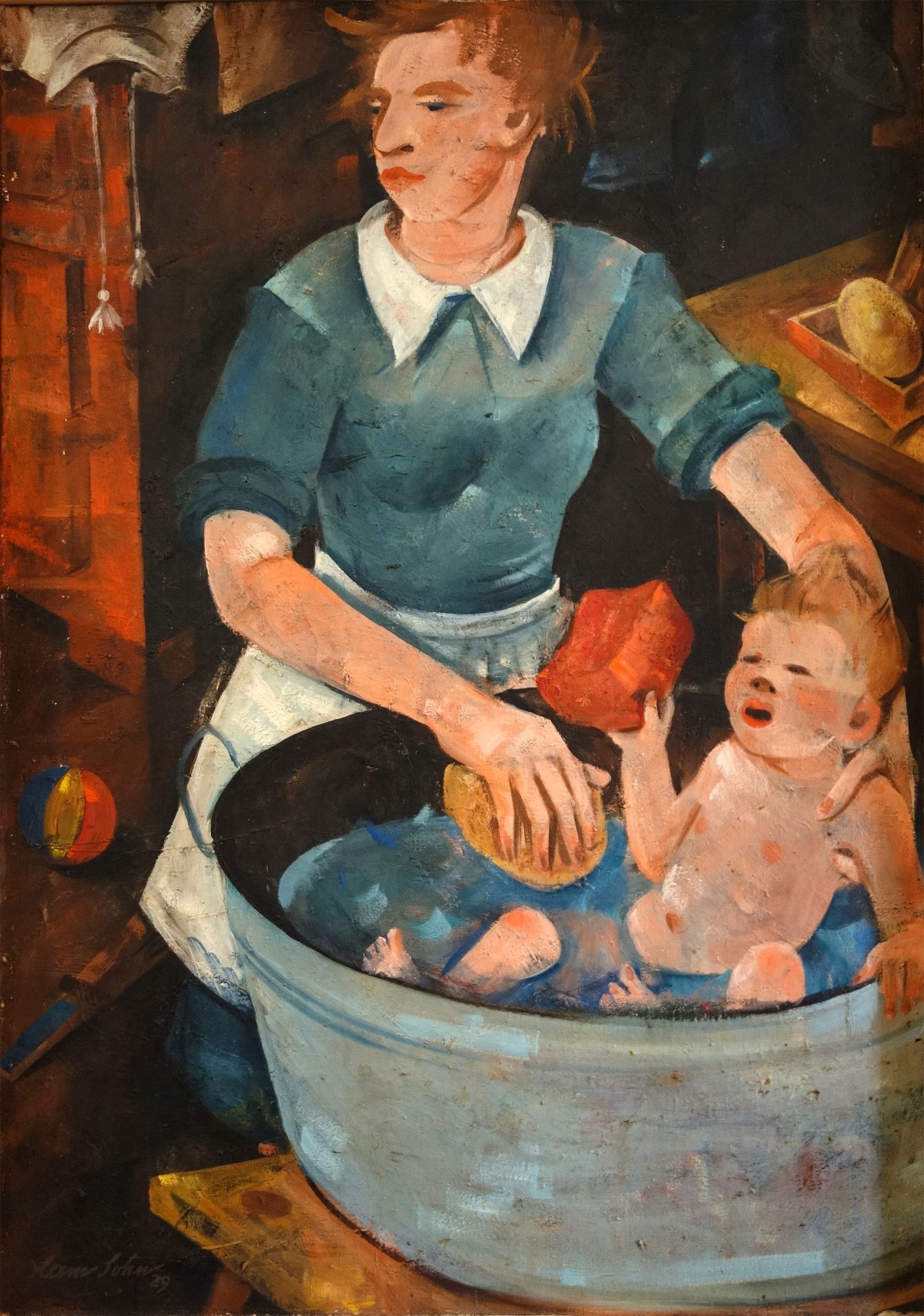Das 1929 entstandene "Kinderbad" erinnert nicht zufällig an Carl Hofer (1878-1955). Sohn war Hofer 1924/25 im Verlauf eines zweijährigen Studienaufenthaltes in Berlin begegnet, den ihm der Stuttgarter Kunstsammler und Mäzen Hugo Borst ermöglicht hatte. Gefördert von dem Kunsthändler Alfred Flechtheim erhielt Sohn Anschluss an aktuelle bildnerische Tendenzen und setzte sich sowohl mit dem Konstruktivismus als auch mit dem Berliner Expressionismus auseinander.
Im Entstehungsjahr des Gemäldes gründete Sohn zusammen mit Gottfried Graf, Anton Kolig, Hans und Marianne Spiegel, Arnold und Olly Waldschmidt, Walter Ostermayer, Albert Müller und Karl Knappe die "Gruppe 1929 Stuttgart". Unter dem nationalsozialistischen Regime wurde Sohn 1937 mit Arbeits- und Ausstellungsverbot belegt. 1946 wurde er als Professor für Malerei an die Stuttgarter Akademie der bildenden Künste berufen, wo er bis 1962 tätig war.
Bez. u. re. "Herm Sohn/29"
en

